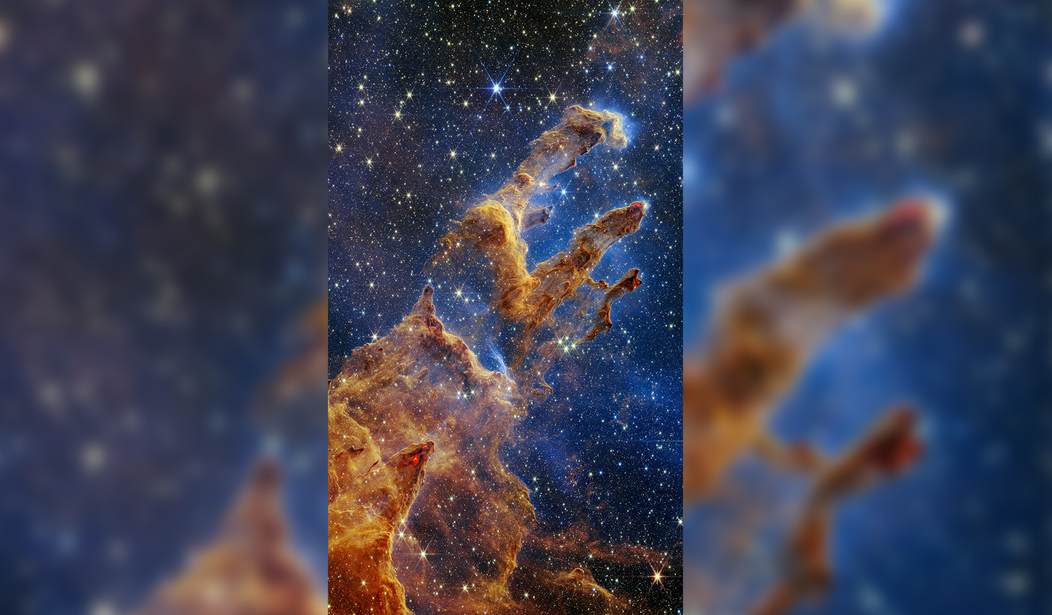Let's go for something with a beat today.
I think I'm going to concentrate on nebulae and other flashy gassy phenomena today, lots of nice pictures recently. Andrew McCarthy first. I like the sentiments, too.
If there’s one thing I hope I’m able to do with this platform I’ve been given, it’s getting more people to look up and think bigger than Earth pic.twitter.com/TNX62RuHDW
— Andrew McCarthy (@AJamesMcCarthy) August 14, 2025
Maybe the most spectacular aurora display I've seen.
Incredible Auroras over Finland from last night...😍😍😍 pic.twitter.com/yAo97iif0b
— Shining Science (@ShiningScience) August 13, 2025
Well, air and clouds are gases, right?
There’s so much beauty in this world if you just take the time to look for it pic.twitter.com/m7lBHaRrhG
— Andrew McCarthy (@AJamesMcCarthy) August 13, 2025
But what's the answer?
The Question Mark Nebula ❓
— 🔭AstroBackyard (@AstroBackyard) August 12, 2025
My latest image from the backyard is the 'Cosmic Question Mark Nebula' in the constellation Cepheus.
This target includes a large, bright emission nebula (NGC 7822), with a nebulous 'point' at the bottom (Sharpless 170).
If you're in the northern… pic.twitter.com/4AyyeONvhT
I don't think I've ever seen the zodiacal light. Want to, though. Leftover planet parts.
What's that strange light down the road? Dust orbiting the Sun. At certain times of the year, a band of sun-reflecting dust from the inner Solar System appears prominently just after sunset -- or just before sunrise -- and is called zodiacal light. Although the origin of this… pic.twitter.com/3TwYfmTtuY
— Astronomy Picture of the Day (@apod) August 12, 2025
Not really on today's theme, but too cool to miss.
We’re still just at the beginning of our journey into the great beyond pic.twitter.com/OeqfCryH1o
— Andrew McCarthy (@AJamesMcCarthy) August 12, 2025
I know I've said this before, but the difference in the images we have available now and those in my astronomy textbook from 1975 still stuns me.
NGC 6992 is the eastern portion of the Cygnus Loop, which is a supernova remnant (exploding star) roughly 2,400 light years away in the constellation Cygnus. The original star was 20 times more massive than the sun. ED102 refractor. ASI533mc Pro Camera pic.twitter.com/B27rg8BLhK
— BigKahuna Ron (@BigKahunaRon) August 11, 2025
It all organizes itself.
NGC 300 (Sculptor Pinwheel Galaxy) is a delicate-looking southern sky spiral galaxy located about 6,5 million light years distant in constellation Sculptor. Discovered in 1826 by James Dunlop, the galaxy is large, measuring about 55,000 light years in diameter. 📷 ESO #NGC300 pic.twitter.com/2FikLWcXKd
— Lee-Anne Gibbon (@LeeAnneGibbon1) August 10, 2025
More.
Here’s the California Nebula, captured from my backyard in Arizona with a 12” telescope.
— Andrew McCarthy (@AJamesMcCarthy) August 4, 2025
I formatted this as a mobile wallpaper, you’re welcome to save it and use it! pic.twitter.com/gdiUzF8kdS
Real estate.
Artistic visualization and size comparison of over 800 terrestrial exoplanets discovered and confirmed by scientists.
— Black Hole (@konstructivizm) August 15, 2025
Image source
The artwork is “Icy and Rocky Worlds,” an infographic by Martin Vargic (Halcyon Maps) that visualizes 800–900 rocky/terrestrial exoplanets by size… pic.twitter.com/c0N2RiFXTv
I'm going to finish with this. It turns out the next Starship launch will be on my 70th birthday. Come on, Elon, it's my birthday, make it work!
NEWS: SpaceX has officially scheduled its 10th Starship test flight for August 24th. The launch window will open at 7:30 PM ET.
— Sawyer Merritt (@SawyerMerritt) August 15, 2025
Test flight objectives:
• Booster is attempting several flight experiments to gather real-world performance data on future flight profiles and… https://t.co/uboowYm0cB pic.twitter.com/Of73nmL1yH
And that's it for this week. Come back next week, and a special request: pass the word to your friends that if they subscribe to PJ Media VIP, they will get weekly Sky Candy, and so much more.










